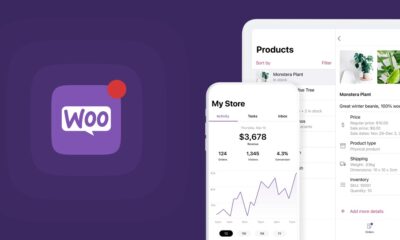General
Top 5 Advantages of Supply Chain Management


The complexity of today’s global supply networks necessitates a data-driven framework to supply chain management. From acquisition through manufacture and shipment to the ultimate user, data-driven supply chain management gives insight from beginning to finish for tracking the movement of resources, commodities, and items. Other aspects such as a solid vendor or even supplier relationship management, efficient budgetary control, obtaining the proper logistics partnerships, and implementing new supply chain technology all play a role in comprehensive supply chain management. Supply chain optimization isn’t easy, but it comes with a slew of advantages that boost operational efficiency.
Here are five of the most significant advantages of efficient supply chain management:
- Enhanced collaboration: For businesses, information flow is a major issue. As per Oracle, 76 percent of businesses need an advanced flow of information throughout the supply chain, and half of those businesses claim segmented data leads to missed sales opportunities. Comprehensive software solutions eliminate inefficiencies and enable smooth information interchange, giving you a complete picture of the distribution network from beginning to finish. Supply chain executives now have the knowledge they require, in perspective, to make more educated decisions, owing to better network connectivity.
- Meeting customer demand: According to a VISA analysis, if customer sales grow by 5% in a particular week, a merchant may purchase 7% extra inventory in reaction to the boost and the expectation that demand would continue. After noticing what looks to be a 7% spike in consumption, the next point in the chain asks for a greater increase from his vendor. The manufacturer may eventually see an overstated 20% rise in orders. This trend, known as the bullwhip effect, is caused by disruptions in conveying supply and demand fluctuations. Supply chain executives that have real-time, precise information and unified knowledge may better estimate consumption and adapt quickly to altering marketplace constraints, avoiding problems such as the bullwhip effect.
- Optimization of the shipping process: Supply chain management is prioritizing shipment efficiency as a result of growing expenses. Organizations can send items to clients faster while lowering costs by determining the most effective shipping options for small packages, huge bulk purchases, and other shipping circumstances. These cost reductions benefit not just the firm’s financial performance, but they may also be transferred on to customers, enhancing consumer contentment.
- Costs of overhead have decreased: Businesses can minimize the operational costs involved with maintaining slow-moving goods by keeping less low-velocity merchandise to create a place for significantly greater, revenue-producing products with much more effective predictive estimates. Overhead is heavily influenced by warehousing fulfillment expenses. Minimize these expenses by optimizing your warehouse architecture, using the appropriate technological solutions to increase efficiency, and installing a more effective inventory management system.
- Risk mitigation has advanced: Monitoring both big-picture and detailed supply chain statistics can uncover possible hazards, allowing businesses to devise contingency plans in advance of unforeseen events. Organizations can prevent negative consequences by adopting early action instead of overreacting to supply chain interruptions, quality assurance difficulties, or other challenges as they develop. Businesses can also create simpler processes by understanding risks. For example, 87 percent of businesses feel that if they had a better knowledge of supply chain risks, they could cut inventories by 22 percent.
Breaches in the supply chain have a huge impact, affecting every point along the way. On the other hand, successful supply chain management has significant impacts that promote the seamless, smooth movement of customer data, commodities, and activities from acquisition through final distribution.



 General2 months ago
General2 months agoWhat Is Smart Construction? A Beginner’s Guide



 Technology1 month ago
Technology1 month agoHow to Send WooCommerce SMS Notifications for Orders





 Technology1 month ago
Technology1 month ago7 Essential TikTok Metrics to Track for Higher TikTok Views in 2025

 Model4 weeks ago
Model4 weeks agoTiffany Stratton: Biography, Wiki, Age, WWE Career, Net Worth, Before Fame, Boyfriend



 Technology4 weeks ago
Technology4 weeks agoTop 5 Tips for Using File Uploads in Your WooCommerce Store Efficiently

 Technology3 weeks ago
Technology3 weeks agoWhy Airlines Are Using Virtual Reality Services for Pilot Training



 General4 weeks ago
General4 weeks agoThe Hidden Costs of a DUI & How a Lawyer Can Help You Avoid Them





 Technology3 weeks ago
Technology3 weeks agoExploring TikTok AI: My Experience Making a Video With Only Artificial Intelligence




You must be logged in to post a comment Login